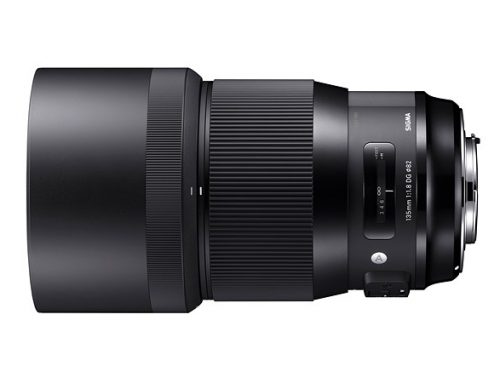Living in Hawaii, adventure, lifestyle experiences, and beautiful destinations are always right around the corner. There are unique and special experiences literally everywhere you look. For some adventurers, GoPro cameras have been their best friends, letting them share their journeys by putting their audiences right in their shoes. Taking the immersive experience to new levels, 2016 ended in a big way for 360? video. With new support from FaceBook, and new cameras that bring the tech to the consumer marketplace, enveloping viewers in your hang-gliding/sky diving/hiking/skating/dancing/exploration adventures has never been more accessible and easy to do.
http://NewsShooter.com has a great update from last month’s big releases.
“December is the time of year when every tech site universally shares best-of-2016 lists and makes its predictions for 2017. But if you’d asked me about live 360 video on December 1, my predictions would have been very different than if you’d asked me today.
That’s because December has been a big month for live 360. At the end of November, we saw the launch of the $99 Insta360 Air, a 360 camera attachment for Android devices with live streaming capabilities. Only a couple of weeks later, Giroptic announced the iO, a 360-degree camera that can plug into the lightning port of your iPhone or iPad and capture 360 photos, videos and live stream.
And in mid-December, Facebook announced support for 360-degree live streaming for a select handful of partners, and expects to roll out the tool to all users in 2017.

On December 13, National Geographic became the first to live stream 360 video on Facebook. Its live stream of a group of scientists emerging from an 80-day simulation of what life would be like living on Mars had more than 2.5 million views by the end of 2016.
Although the Facebook announcement is extremely important to the future of live 360, we can’t really talk about live content without talking about cameras.
In the early days of VR (and, let’s be honest, we’re still in the early days), the industry cried out for more content and headset producers made multi (multi, multi) million-dollar investments in content production. Although cameras were an issue (and still are) there was always someone willing to 3D-print their own rigs, tie together a bajillion GoPros and spend countless hours stitching.
But the issues facing live 360 are different.
Back in April of 2016, when YouTube launched support for live 360 video, I remember reading about how it would be the “gateway drug to VR.” While that hasn’t exactly proven true (yet) live video in and of itself really didn’t become mainstream until social platforms—first with Meerkat and Periscope, and later, Facebook Live—were able to serve up a ready and willing audience.
It’s an issue of immediacy. YouTube is a destination (I search for a tutorial, I click a link in a tweet, I catch up on my subscriptions), while Facebook and the like are unbreakable habits (at least for me).
Live 360 video on social platforms offer an immediate audience, but, for the most part, 360 video is anything but immediate. That’s what quick little cameras like Giroptic iO hope to deliver.

The Giroptic iO can capture 4K photos and 2K videos.
The iO features two 195-degree lenses and a stereo mic, and footage is stitched immediately from within the dedicated iO 360 app. Although the app is light on editing features, it’s built to simplify the sharing process. Users can share photos to Facebook, Instagram, Twitter and Flikr as flat, little planet, or spherical images, or view it from within a headset.
Although the photo and video quality (4K and 2K, respectively) leaves something to be desired, what’s perhaps most interesting about this device is the sheer simplicity of its live streaming capabilities.
When users choose to live stream, they have the option to share natively to YouTube or to a custom server. It’s literally the click of a button, making the live streaming process from my Ricoh Theta seem almost tedious.
It would be no surprise if the app added native compatibility with Facebook Live 360 in the new year…Which brings me to my next point: quality and user experience limitations.
Live 360 on Facebook can’t be watched from a headset (though the replays can), and doesn’t support 4K video or spatial audio (but those solutions may be on the horizon).
If anything, those stats provide even more incentive to test out the medium with something like the iO rather than a more expensive rig that can shoot at resolutions the platform won’t even support. Not to mention, social users tend to be a bit more forgiving about quality.

The Giroptic iO camera is smaller than an Altoid tin and plugs into the lightning port of an iPhone or iPad.
Then, of course, there’s the issue of filming logistics. Shooting live requires the power and bandwidth, and shooting live in 360 requires even more bandwidth AND even more stability.
- Power: Giroptic iO doesn’t draw power from your iPhone, but is instead equipped with its own battery. And, while it can’t record without your iPhone (unlike the Insta360 Nano), it offers up to an hour and a half of battery life, even while live streaming. The camera can be recharged via a micro USB port next to the lightning pin. So, no, you can’t charge the camera while its in use—but for many instances, an hour and a half of use will be more than enough.
- Bandwidth: Giroptic iO requires at least a 4.5 Mbps connection to go live. For reference, Verizon Wireless boasts upload speeds between 2 and 5 Mbps on its 4G LTE network.
- Stability: Shaky footage on Periscope may give pro videographers a figurative headache, but shaky 360 can literally make you sick. Although the iO comes with a plastic carrying case that can convert into a stand for iPhones and iPads, it looks very inconvenient to use and oh-so-tipoverable.
Despite those limitations, Giroptic iO is definitely a step in the right direction when it comes to offering a simplified, streamlined solution for sharing live 360 video. And if the proliferation of live video over 2015 and 2016 is any indication, if you equip the masses with simple sharing tools and a built-in audience, they will come.
Giroptic iO is available for pre-order now for $249 on Giroptic’s website and is expected to ship January 17.”
Original post: http://www.newsshooter.com/2016/12/27/december-has-been-a-big-month-for-live-360-new-cameras-and-big-news-from-facebook/
[Source: http://newsshooter.com]






